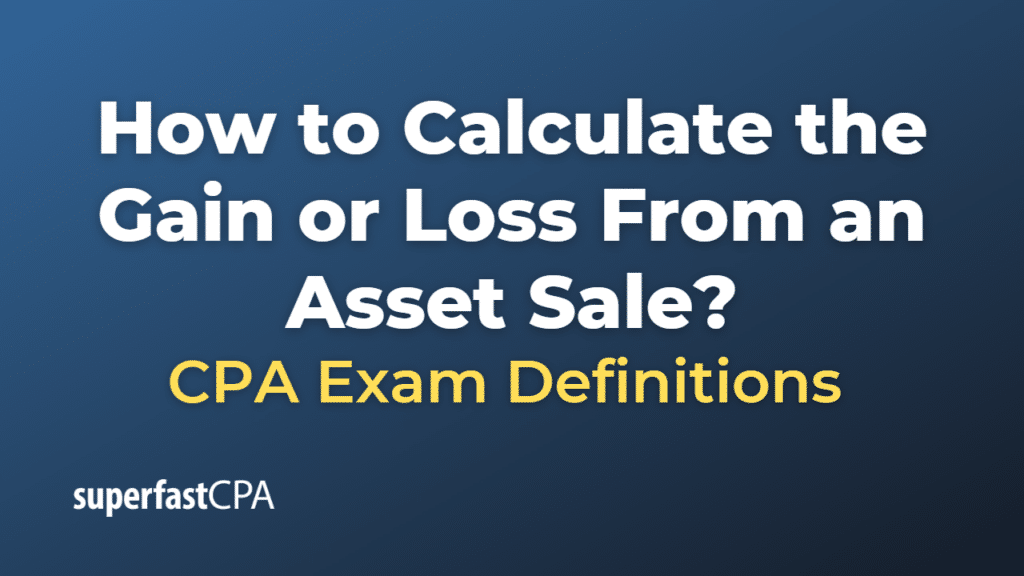How to Calculate the Gain or Loss From an Asset Sale
The gain or loss from the sale of an asset is calculated by comparing the sale price of the asset to its book value (the asset’s cost minus accumulated depreciation).
Here’s the basic formula:
Gain/Loss = Sale Price – Book Value
Let’s break it down:
- Sale Price: This is the amount the asset is sold for.
- Book Value: This is the original cost of the asset minus any accumulated depreciation. Depreciation is the reduction in the value of an asset over time, due to wear and tear, obsolescence, or other factors.
If the result is positive, then you have a gain. If the result is negative, you have a loss.
It’s important to note that the gain or loss from the sale of an asset is a non-operating item, because it doesn’t result from the regular operating activities of a business. It is often reported separately in the company’s income statement.
Moreover, tax implications can arise from gains or losses on asset sales, and tax laws vary by jurisdiction. It’s always a good idea to consult with a tax professional to understand any potential tax consequences.
Example of How to Calculate the Gain or Loss From an Asset Sale
Suppose your business purchased a piece of equipment five years ago for $20,000. Over the course of those five years, you’ve recorded a total of $15,000 in accumulated depreciation on the equipment.
Now, let’s say you’ve sold this equipment for $7,000.
First, you need to calculate the book value of the equipment at the time of sale. The book value is the original cost of the asset minus any accumulated depreciation.
So, in this case, the book value would be:
Book Value = Original Cost – Accumulated Depreciation
= $20,000 – $15,000
= $5,000
Now, to calculate the gain or loss from the sale of the equipment, subtract the book value from the sale price:
Gain/Loss = Sale Price – Book Value
= $7,000 – $5,000
= $2,000
So, in this case, you’ve made a gain of $2,000 from the sale of the equipment. This means that the equipment was sold for $2,000 more than its recorded (book) value at the time of sale.
If the result had been negative (for example, if you had sold the equipment for $3,000), it would represent a loss on the sale of the asset.













